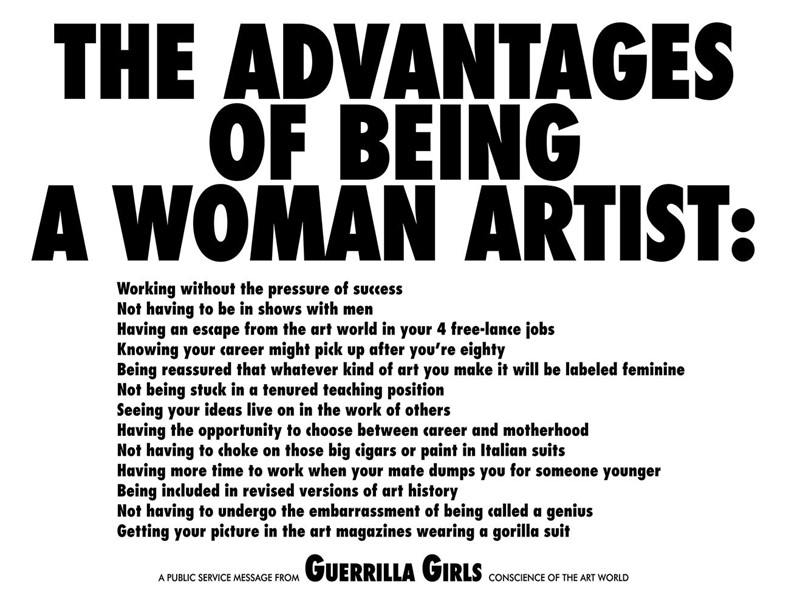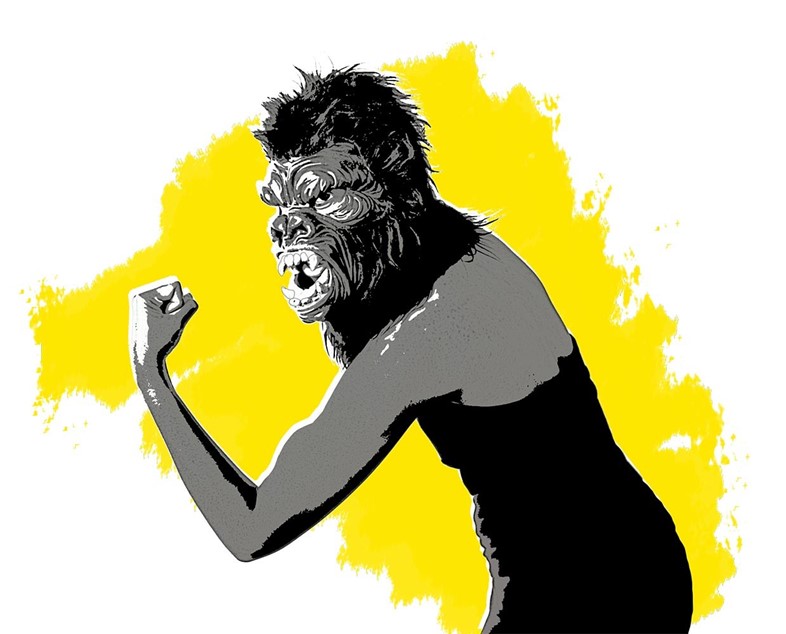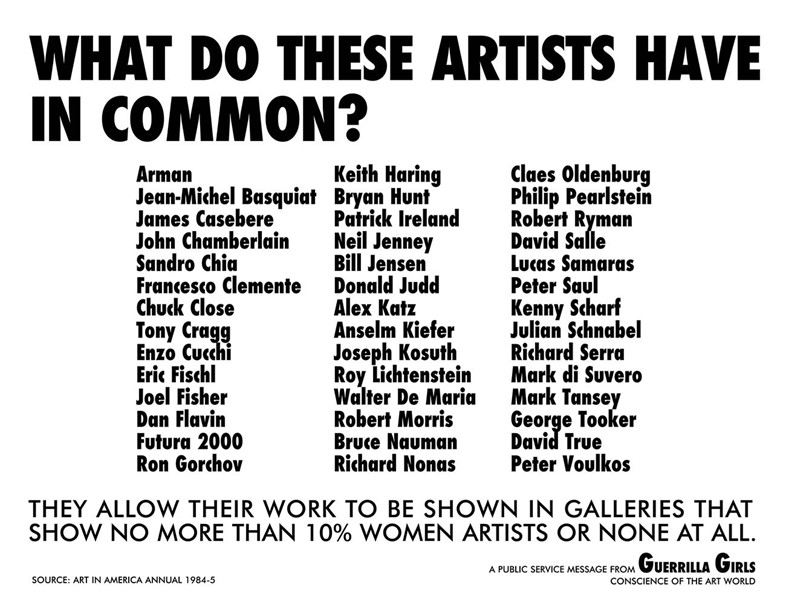The revolutionary all-female art collective turns 30 this year, and they're marking the anniversary with a new, attitude-laden exhibit at the Walker Art Center
Who? They describe themselves as the ‘conscience of the art world’, donning gorilla masks to conceal their identity in a witty play on words, and in light of the magnificent impact the Guerrilla Girls have had on the art industry over the past 30 years, they might well be right.
The all-female art collective first formed in 1985, with a view to fight the ubiquitous racism and sexism which traditionally underpins the art world. "We’re feminist masked avengers in the tradition of anonymous do-gooders like Robin Hood, Wonder Woman and Batman," they say on their website. "How do we expose sexism, racism and corruption in politics, art, film and pop culture? With facts, humor and outrageous visuals. We reveal the understory, the subtext, the overlooked, and the downright unfair."
Anonymity and activism are at the core of the Guerrilla Girls' beliefs; as a part of their desire to remain unknown, each member has adopted a pseudonym after a celebrated dead female artist or collector who pushed the boundaries in her own career, from Frida Kahlo and Gertrude Stein to Méret Oppenheim, to name just a few.

What? In 1984, a group of women artists noted the staggering inequality in the representation of male to female artists, while visiting an exhibition entitled International Survey of Painting and Sculpture at the Museum of Modern Art in New York. They decided to take action.
Adopting the familiar visual language employed in advertising, the Guerrilla Girls began creating controversial posters and paying for them to be displayed in highly visible spots around New York. Such posters often appropriated famous works from art history of art. One, for example, took a famous painting of a concubine, La Grande Odalisque by French neoclassical painter Ingres, and replaced the woman’s head with that of a gorilla, graffiti-ing it so that she reclines next to the words ‘Do Women have to be naked to get into the Met. Museum? Less than 5% of the artists in the Modern Art sections are women, but 85% of the nudes are female.’

The Guerrilla Girls have built a reputation on their fearlessness. They shame museums and artists into correcting their sexist errors – one such piece being a poster which lists names of all the male artists who allow their works to be displayed in galleries in which women artists are visibly missing. The posters are strong, simple and striking, allowing the message to be communicated with a frank sincerity. Having established themselves as the doyennes of feminist art in the 1980s, the Guerrilla Girls moved on to tackle further issues, such as racial discrimination in the art world, and misogyny in the entertainment industry. Since their formation, the collective has produced more than 90 posters, three books, and an enormous number of stickers and printed projects.

Why? This year marks the Guerrilla Girls’ 30th anniversary. When they first began their war on the art world, their principal frustration was with museums’ lack of willing to address the underrepresentation of female artists. Thanks to the controversial methods used by the Guerrilla Girls, however, many have now been forced to reconsider their displays, exhibition schedules and acquisition policies, with these issues firmly in mind.

As if to demonstrate the ubiquity of their work, in 2006 Tate Modern hosted a display devoted to the Guerrilla Girls, and in 2014 the Whitney Museum of American Art acquired a large portfolio of their posters and feminist art ephemera. The Guerrilla Girls have inspired countless women artists to fly the flag for feminism, from New York-based female art collective Pussy Galore, to the Bunny Collective, a group which formed in 2013 in order to focus on ideas gender, body and sexuality. As just one part of their continued mission, in 2016 the Guerrilla Girls will host a Twin Cities Takeover, during which the Walker Art Center in Minneapolis will display a selection of posters from the dynamic feminist art collective. 30 years after their initial grouping, the Guerrilla Girls show no signs of slowing: on the contrary, one gets the impression they’re just getting started.

Art at the Center: Guerrilla Girls is on show at the Walker Art Center from January 21 until December 31, 2016.
